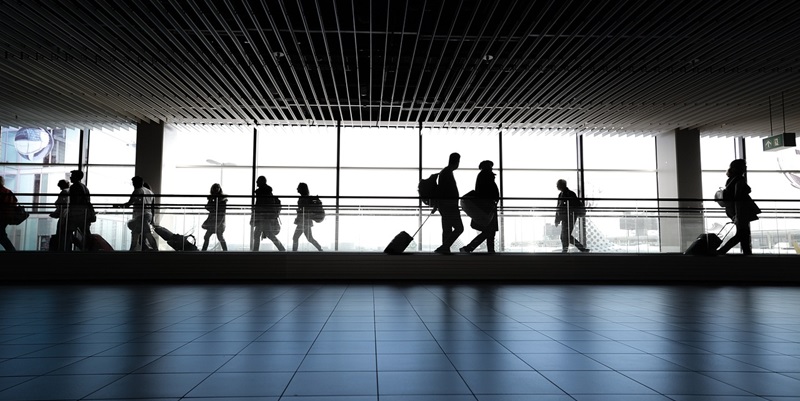In the rapidly evolving world of technology, the tourism industry has also embarked on a transformative journey. One such innovation that holds immense potential for the future of tourism is generative artificial intelligence (AI). By analyzing vast amounts of data, generative AI algorithms can generate unique and tailored travel recommendations based on individual preferences, interests, and past experiences.
How do generative AI algorithms analyze data to generate personalized travel recommendations?
Generative AI algorithms are designed to analyze large datasets and identify patterns. In the context of tourism, these algorithms can process travel-related data to create personalized recommendations and itineraries. By considering factors such as destinations, attractions, accommodations, and transportation options, these algorithms can generate recommendations that match individual preferences perfectly.
The benefits of generative AI in creating curated travel itineraries
Imagine having access to a curated itinerary that takes into account your preferences for sightseeing, dining, and accommodation. Generative AI can provide you with just that. By analyzing your previous travel experiences, as well as your expressed interests and preferences, these algorithms can create a tailor-made itinerary that ensures you make the most of your trip. From suggesting hidden gems to including popular attractions, generative AI can significantly enhance your travel experience.
The inclusion of real-time data in generative AI algorithms for optimized travel experiences
To further optimize your travel experience, generative AI algorithms can factor in real-time data. This means that your itinerary can be adjusted based on current weather conditions and local events. If it’s raining heavily at a particular destination, for instance, the algorithm can suggest alternative indoor activities or recommend delaying your visit to that location. By incorporating real-time data, generative AI ensures that your trip is optimized for the best possible experience.
The application of generative AI in identifying patterns and generating new content in the tourism industry
Generative AI algorithms analyze large datasets to identify patterns. This ability has immense potential in the tourism industry. By analyzing user preferences, feedback, and travel data, these algorithms can generate new content that matches individual preferences. For example, if a user frequently visits beach destinations, the algorithm can generate recommendations for similar coastal locations, taking into account factors such as climate, amenities, and proximity.
The use of generative AI to process travel-related data for personalized recommendations and itineraries
Generative AI is not meant to replace human travel agents but rather enhance their capabilities. It can provide valuable insights and recommendations that can assist travel agents in creating more tailored and efficient travel plans. By analyzing a traveler’s preferences and past travel data, generative AI can offer suggestions that align with their interests, making the planning process effortless and personalized.
The role of generative AI in enhancing the capabilities of human travel agents
In a world where travelers have increasingly diverse preferences and expectations, generative AI can assist travel agents in meeting these demands more efficiently. By providing data-driven insights, generative AI can help travel agents better understand their clients and offer personalized recommendations. It equips travel agents with the tools necessary to create compelling travel itineraries tailored to suit each client’s unique preferences and interests.
How can generative AI provide valuable insights and recommendations to assist travel agents?
Generative AI algorithms not only process vast amounts of data but also analyze it to identify trends and patterns. By examining customer feedback, preferences, and historical travel data, generative AI can provide valuable insights to travel agents. These insights can be leveraged to recommend specific destinations, attractions, or accommodations that align with the client’s preferences, ultimately enhancing their overall travel experience.
The integration of real-time data in generative AI enables the updating of weather conditions and local events during a trip
Real-time data is crucial for ensuring a seamless travel experience. Generative AI can incorporate real-time data to provide updates on weather conditions, local events, and other relevant information during a trip. This ensures that travelers are informed about any changes or disruptions that might affect their plans. By accessing up-to-date information, travelers can make informed decisions and adapt their itineraries accordingly, thereby maximizing their enjoyment and safety throughout the trip.
The potential transformation of vacation planning and enjoyment through the use of generative AI technology
With the ability to analyze vast amounts of data and generate tailored recommendations, generative AI technology has the potential to transform the way we plan and enjoy our vacations. By incorporating individual preferences, interests, and real-time data, this innovative technology empowers travelers by providing personalized and optimized travel experiences. It saves time, reduces guesswork, and ensures that every trip is thoroughly curated to meet the unique needs and desires of each traveler.
In conclusion, generative AI is revolutionizing the tourism industry by offering personalized travel recommendations and curated itineraries. By leveraging vast datasets and analyzing real-time information, generative AI algorithms enhance the capabilities of human travel agents, providing valuable insights and recommendations. As this technology continues to advance, the future of tourism holds endless possibilities as it transforms the way we plan and enjoy our vacations. So get ready to embark on unforgettable journeys tailor-made just for you, thanks to the power of generative AI.

